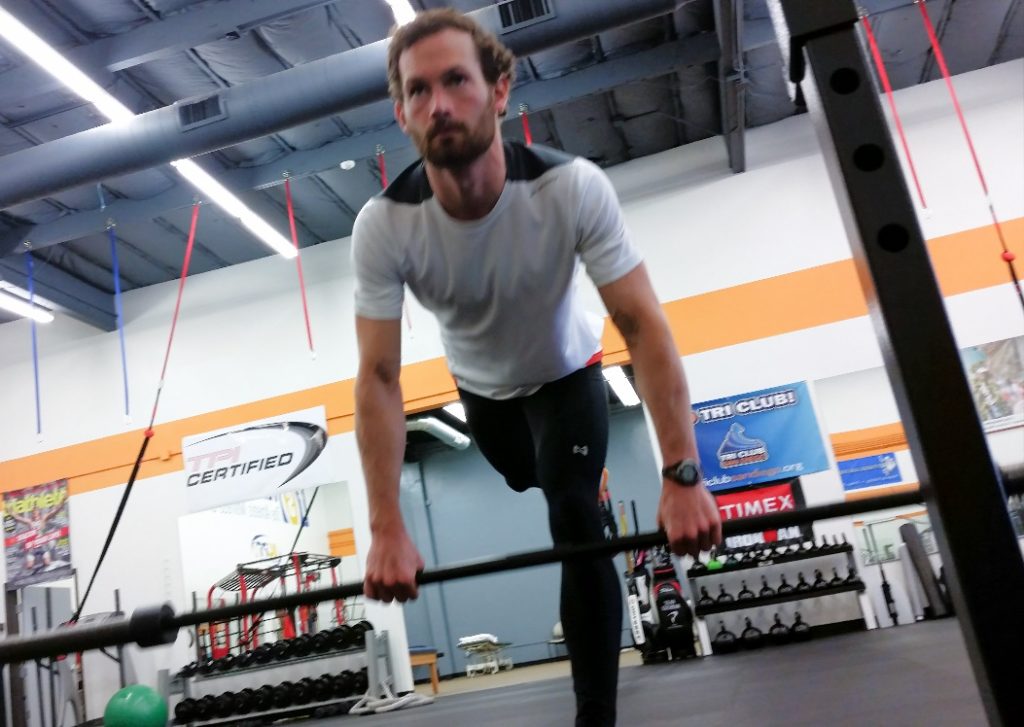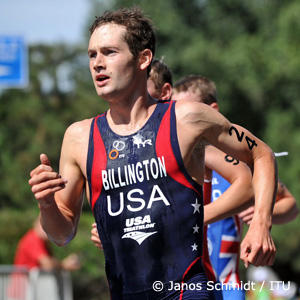Written by Greg Billington, USA Olympic Triathlete
The races are done. The sweat sweated. An exhausted satisfaction mixed with uncertain excitement about the upcoming season. But a mandatory break from training and racing seems counter-intuitive. How could time away from your primary sport really make you better?
The implication of an “off” season is incorrect; we never stop being athletes. I prefer to think of it as a transition season, a time when we absorb the past year and can organize and prepare for the season ahead. I mean, for this period we can replace training with the way more enjoyable activity of talking about training. Glorifying your threshold power, those 30-hour training weeks, and how close you came to race weight absolutely reinforces your connection to the process of becoming a phenomenal athlete.
Begin 2017 feeling re-energized for triathlon instead of just being fatter and lazier than you were a few months prior with these five tips!
1. Length
Every year, I will take a month without any structured training and 4-5 months without any racing. That can seem like an eternity. And it is. While not everyone needs that long, a few months away from the adrenal stress of racing improves the overall quality of your competitions. There is a similar effect for time away from structured training, so the following items detail how I use the first six weeks after my final race to prepare for the next season.

2. Mental Preparation
Nothing compares to hours of pedal mashing before redlining a run. Because what is best in life, but to crush your competition, see defeat in their eyes, and hear their lame excuses at the finish line?
But racing with that much gusto is unsustainable. We take down time partly for physical reasons, but more to mentally restructure and rekindle the competitive flame for the next season.
Take a week to write down the high points of the year: when you absolutely demolished the Group Ride World Championships, swam way faster than that doofus with the shaved chest, or flawlessly put on your race number. Think about how you approached those moments, when they occurred in the season, and what you can do to recreate them next year. If you find meaningful insights, these should be incorporated into your training program.
During my transition phase, I’ll also pick up a few lighter activities to maintain the all-important drive to destroy the will and general well-being of my competition. Ping pong is my usual favorite. Badminton, similarly. Also, Scottish shin-kicking. Regardless of what it is, it’s vital to keep that competitive edge throughout the year.
3. Training Preparation
The transition season can leave a great deal of free time which wreaks havoc with your normal routine, making it harder to restart training. Immediately replacing the usual shammy time with purposeful activities can help you prepare for a great season.
I start habits which I want to keep in the coming year. If you’ve wanted to add stretching, meditation, upside-down dumbbell sit-ups to your routine, now is the time to add it in during the time that you would normally be doing real training, like running.

It’s also a great opportunity to incorporate new training tools that can be critical for making improvements. This is when to make the biggest changes to your Bike Fit. That way you have the maximum amount of time to become comfortable in the new position and make any minor adjustments before you risk injury during long training blocks.
You should go for runs in new shoes, try out new wetsuits, and take a deliberate look at your training and whether or not you can deal with your coach for another season.

4. Transition Training
You’ll end up training during those first 4-6 weeks of real down time. I mean, it’s fun. That’s why we’re here. As you do train, though, you’ll need to give your body a break from certain types of training. Specifically, there needs to be at least a good six-week period where you avoid threshold efforts. This is the type of training that can lead to high levels of fatigue and burnout. If you’re going to do any type of activity, it should be long and easy (like a hike) or very short and very intense. You’ll have time to recover from these activities and especially those short burns are a great way to remind you of the fun that awaits in the coming season.
The vast complexities of an off-season session:
- 15 minute warm up
- 4-6 x 30 second sprints (uphill if running or cycling)
- 10 minute cool down
This is also the part of the season where you have the time to incorporate strength training. This helps prepare your musculoskeletal system for the demands of repetitive cardiovascular training and reduce the likelihood of overuse injuries.
The following are some of my favorite exercises. Obviously cater the duration to your individual fitness level and keep in mind that strength training should never be so taxing as to interfere with your real workouts. Before I start my routines, I’ll make sure to do at least eight minutes of easy cardio, anything from jumping rope to cycling.
Example strength training session:
- 3 sets of Front plank and side plank, building to 2 minutes each
- 3 sets of 10 x RDLs with each leg, building weight
- 3 sets of 10-15 lunges, building to a 10-20lb weight vest
- 3 sets of 20-30 seconds medicine ball ’swimmers’
- 2 sets of pull ups to failure (or up to 20)
- 3 sets of 15 glute bridges, building to weighted single leg

5. Food
Like life, the off-season is really about food. It’s the time of year you are supposed to be way off-race weight and generally jollier. Literally (figuratively), everyone is about 10% nicer each pound they are further away from race weight. Sadly, a good rule of thumb is to weigh yourself each week and top out at about 5-6% over your race weight. You can pretend this happens because you started a strength program, but this will mainly be due to Thanksgiving and Christmas.
It is also helpful to take this time to experiment with new recipes and whatever health fad you feel will power you to that next performance breakthrough. it’s the cage free, gluten free, quinoa encrusted white veal diet this year! Maybe kombucha in my race bottles to aid gel digestion?
Here’s one of my favorite breakfast recipes. I put the concoction in a jar the night before and then additional ingredients in the morning if I feel like it.
Overnight Oats
- 1:1:1 ratio of Old Fashioned Rolled oats, milk, and yogurt
- Small banana
- 1 tablespoon of chia seeds
- Pinch of salt (I sweat a lot)
- Cinnamon
- Palmful of almonds
There are many ways you can prepare for a season, but it is easier to find success by picking a few and doing them well. The above are simple ideas, but success is usually found by simplifying complex processes and mastering them.
So, good luck, enjoy the transition season, and prepare to smash 2017!
 About the Author: Greg Billington is a 2016 triathlon Olympian. Billington began swimming, at age 8. He discovered track and cross country in high school, where he ran at Wake Forest University. Billington’s first international triathlon competition was in 2006 racing for the U.S. in the ITU Elite Junior Worlds. He is part of the USA Triathlon Project 2016 Squad and coached by the one and only, the USA Triathlon Certified Coach, Paulo Sousa.
About the Author: Greg Billington is a 2016 triathlon Olympian. Billington began swimming, at age 8. He discovered track and cross country in high school, where he ran at Wake Forest University. Billington’s first international triathlon competition was in 2006 racing for the U.S. in the ITU Elite Junior Worlds. He is part of the USA Triathlon Project 2016 Squad and coached by the one and only, the USA Triathlon Certified Coach, Paulo Sousa.
